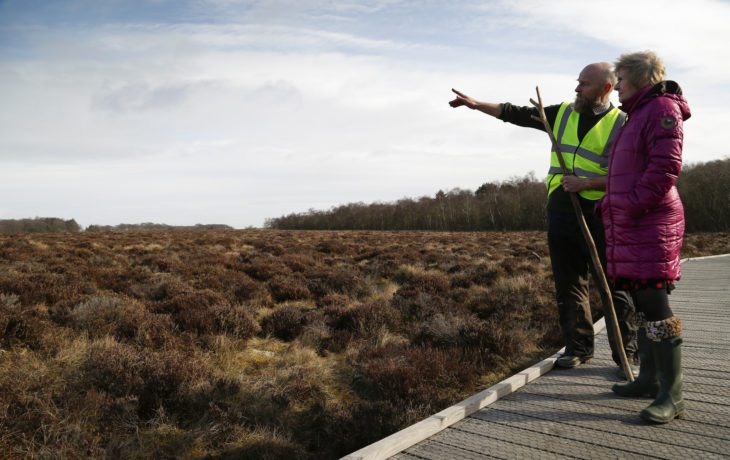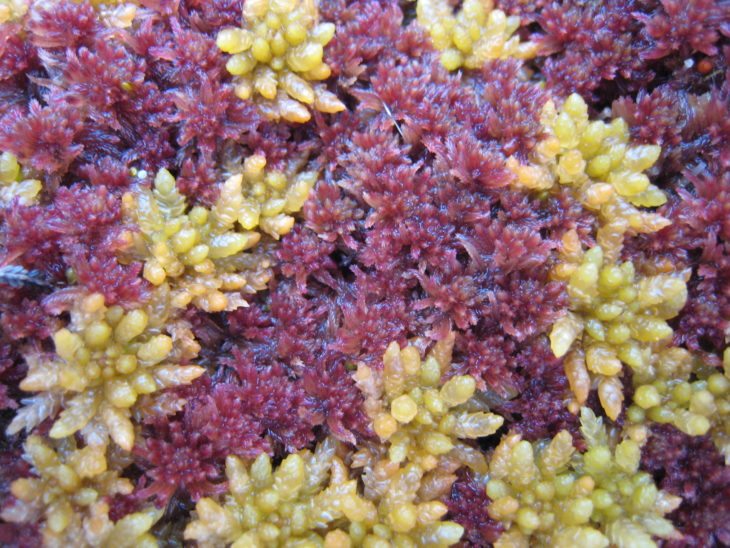The inconvenience of broken bogs
Peat bogs aren’t perhaps the most glamorous habitats on the planet, but they are some of the most important. Just look at the numbers. Peatlands cover just three per cent of global land surface area yet contain twice the carbon contained in all the world’s forests.
Around 15 per cent of peatlands have been drained and these damaged bogs are releasing a staggering 1.3 gigatonnes of CO2 into the atmosphere every year. That is a lot, the equivalent to 5.6 per cent of all human-caused CO2 emissions every year, or about the same as the entire global aviation industry. In 2015 alone, fires in Indonesian peat swamp forests emitted nearly 16 million tonnes of CO2 a day, more than the daily emissions from the entire US economy.

Earlier this year I was part of a United Nations delegation that visited the tropical peat forests of the Congo basin. Incredibly, these vast peatlands of central Africa, covering an area the size of Western Europe, have only recently been discovered. It’s good news for us all that they are still largely intact; the billions of tonnes of carbon stored below them and the tens of thousands of western lowland gorillas that live within them, safe for now.
During the visit, I witnessed the signing of the Brazzaville Declaration by Ministers from Indonesia, Republic of Congo and Democratic Republic of Congo. The declaration is one of the most important conservation initiatives on the planet as it commits to the protection and sustainable use of the Congo basin peatlands. If these African peatlands go the same way as many Indonesian peatlands – drained, burned and converted to palm oil plantations – the consequences for our climate will be profound.
Like the Congo, Scotland is also a boggy nation but unfortunately we have a much longer history of trying to turn our peatlands into something else. We’ve burned, drained and grazed them. We’ve planted them with conifer trees, we’ve cut and dried them for fuel, and we’ve even removed some of them entirely for garden peat.

But our view of peatlands as good-for-nothing wastelands is changing. We’re finally beginning to understand their true value. 70 per cent of the UK’s drinking water comes from catchments containing peatland dominated landscapes. Water companies are realising if they restore peatlands by making them wet again they can improve water quality and save on the expensive job of cleaning up discoloured water. Re-wetting ‘blanket bogs’ in our uplands could also help to reduce flooding in the lowlands because bogs act like big sponges, smoothing out water flows during downpours.
Peatlands could also be a big ally in tackling climate change. In their damaged state they are a huge source of carbon emissions. The good news is we know how to fix them cheaply and easily and, in doing so, turn them from liabilities into assets for the Nation.

Today, delegates from around the world will meet near Loch Lomond for the IUCN (International Union for Conservation of Nature) UK Peatland Conference. The gathering is an opportunity to take stock of the state of the UK’s peatlands but also a chance to celebrate the beauty of these amazing ecosystems with their rich diversity of colour and life. Once you’ve seen the bejewelled carnivorous sundew plant, heard the plaintive call of the golden plover, or traversed the vast Caithness and Sutherland flow country on foot you’ll realise that peat bogs are quite glamorous after all, they just keep their secrets well hidden.
Jonny Hughes
Chief Executive
This article first appeared in the Scotsman on 2 October 2018
Help protect Scotland’s wildlife
Our work to save Scotland’s wildlife is made possible thanks to the generosity of our members and supporters.
Join today from just £4 a month to help protect the species you love.
Preface
Peat bogs aren’t perhaps the most glamorous habitats on the planet, but they are some of the most important. Just look at the numbers. Peatlands cover just three per cent …
